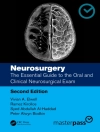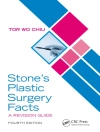Biomedical photonics is currently one of the fastest growing fields, connecting research in physics, optics, and electrical engineering coupled with medical and biological applications. It allows for the structural and functional analysis of tissues and cells with resolution and contrast unattainable by any other methods. However, the major challenges of many biophotonics techniques are associated with the need to enhance imaging resolution even further to the sub-cellular level a...
Biomedical photonics is currently one of the fastest growing fields, connecting research in physics, optics, and electrical engineering coupled with medical and biological applications. It allows for the structural and functional analysis of tissues and cells with resolution and contrast unattainable by any other methods. However, the major challenges of many biophotonics techniques are associated with the need to enhance imaging resolution even further to the sub-cellular level as well as translate them for in vivo studies. The tissue optical clearing method uses immersion of tissues into optical clearing agents (OCAs) that reduces the scattering of tissue and makes tissue more transparent and this method has been successfully used ever since. This book is a self-contained introduction to tissue optical clearing, including the basic principles and in vitro biological applications, from in vitro to in vivo tissue optical clearing methods, and combination of tissue optical clearing and various optical imaging for diagnosis. The chapters cover a wide range of issues related to the field of tissue optical clearing: mechanisms of tissue optical clearing in vitro and in vivo; traditional and innovative optical clearing agents; recent achievements in optical clearing of different tissues (including pathological tissues) and blood for optical imaging diagnosis and therapy. This book provides a comprehensive account of the latest research and possibilities of utilising optical clearing as an instrument for improving the diagnostic effectiveness of modern optical diagnostic methods.The book is addressed to biophysicist researchers, graduate students and postdocs of biomedical specialties, as well as biomedical engineers and physicians interested in the development and application of optical methods in medicine.Key features: The first collective reference to collate all known knowledge on this topic Edited by experts in the field with chapter contributions from subject area specialists Brings together the two main approaches in immersion optical clearing into one cohesive book












